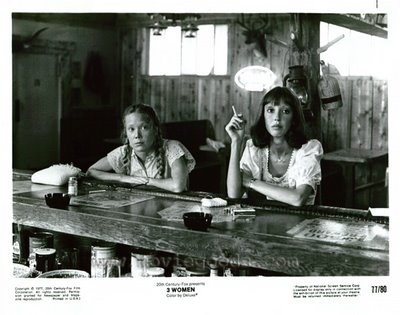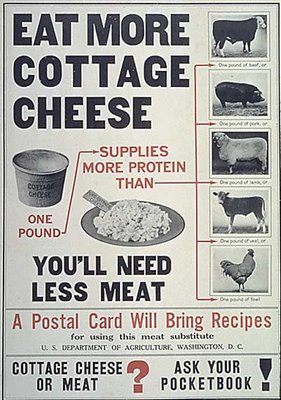SHOW ME
Wednesday, November 29, 2006
Tuesday, November 28, 2006
Product Placement In The Pulpit: Advertising Comes to Church
A recent article describes the slope that has led from the marketing of films and products in churches which began with The Passion of the Christ test screenings and has now led to a dream vacation giveaway among pastors who can prove they mentioned the "Chronicles of Narnia" film series in a sermon, as well as new-car promotions tied to church events. Wharton's marketing program reports:
I'm willing to assume that non-churchgoers find this dissimulative. But if you are a regular churchgoer, I'd be very curious to know if this bothers you. Personally, I think evangelical churches need to operate on the same principles as journalists. In publishing, if it looks compromising to outsiders -- even if you believe passionately that you're above being corrupted -- you'd better not do it, because it will compromise your ability to reach your audience. What do you think?Now some advertisers are taking the next step: marketing products -- like an SUV -- with no intrinsic religious value through church networks. "If we are going to target the African-American consumer, we have to go where they go, rather than ask them to come to us, and the church is a major institution for that community," says James Kenyon, Chrysler Group brand marketing senior manager.
[Patti] LaBelle's tour, which features both her November-release gospel album and Chyrsler's 2007 "Aspen" SUV, is passing through 14 of the largest predominantly African-American megachurches in the country. Some participating churches are also organizing "ride and drive" events, where church members and others can test-drive Chrysler vehicles.
Posted by
Jeremiah McNichols
2
comments
![]()
Labels: advertising
Monday, November 27, 2006
DIY, With Kids

I've begun a series of features on creative types who involve their very young children in their art, and am publishing them on Think In Pictures' sister blog, Z Recommends. First up is Lizette Greco, the Flickr-famed seamstress who has her two kids, age six and seven, using a sewing machine to create improbably hip stuffed creatures from their own drawings. (Above is "Trinoceros," currently available at her Etsy store.) From our interview:
"When I need a drawing for a non-gift project like a softie, I go through the piles of their drawings that have accumulated in their room and pick one up, or I choose from the hundred that I have filed away through the years. If I don't find what I need, I ask if they can draw "something" (a particular animal or creature) for me. Sometimes the kids share their ideas of what an ideal softie should look like (color, size, how many limbs) or what my next one should be, such as another fish to accompany the first one I've made or an octopus, squid, turtles..."
Read more on Z Recommends.
Posted by
Jeremiah McNichols
1 comments
![]()
Labels: interviews
Saturday, November 25, 2006
The Last Three Minutes of Michael Richards' Career
Don't hit 'play' unless you want to watch a racist rant and a celebrity nervous breakdown.
I can imagine that dealing with hecklers is hard. No matter how funny your prepared material, intrusions from the audience force you to think on your feet, which is a pretty good sign of your true sense of humor. It is also a test of your ability to command an audience, which is essential to the performer's role as a temporary leader of the group's shared psychological state. A really good comedian could have made those people miserable that they had said anything. Of course, a really good comedian would also very carefully control how much of him or herself was exposed onstage, and that's Richards' real problem. Comedian Andy Kaufman often left audiences puzzled, uncomfortable, even angry - in his brilliant filmed performance art piece I'm From Hollywood, Kaufman played himself as a misogynist pig who wrestled women to "prove" their inferiority - and won. The joke was on the audience who believed him, and because Kaufman put himself in an uncomfortable personal place to mine for comedy, it was sort of on him too. But he preserved control because he was the only one who really knew what was going on, and played through the role even after the game was up, always reserving his right to make more comedy from territory he had already covered, and preserving a mystique about his opinions and personality that kept audiences rapt.
Comedian Andy Kaufman often left audiences puzzled, uncomfortable, even angry - in his brilliant filmed performance art piece I'm From Hollywood, Kaufman played himself as a misogynist pig who wrestled women to "prove" their inferiority - and won. The joke was on the audience who believed him, and because Kaufman put himself in an uncomfortable personal place to mine for comedy, it was sort of on him too. But he preserved control because he was the only one who really knew what was going on, and played through the role even after the game was up, always reserving his right to make more comedy from territory he had already covered, and preserving a mystique about his opinions and personality that kept audiences rapt.
Others, like the multi-talented Crispin Glover, like to keep us guessing as to whether they really are who they say they are or not. His "performance" on David Letterman in 1987 is a great example of this. Personally (and I consider this a personal weakness) I find such antics funny only when I am confident that I'm in on the joke - unless, of course, there is fake karate kicking involved. That's pretty much a trump card.
Richards, on the other hand, if ever he were a friend to ambiguity, to nuance and insinuation, no longer has that option. And that is a comedy killer, unless you're a great comedian. Ironically, his outburst both closed that avenue and proved that he wasn't a talented enough stage presence to overcome it.
I'm not much of one to follow the comedy circuit, but I have to wonder if it would be a breach of some unwritten code for comedians to take up this sorry spectacle as a source of humor. Lenny Bruce certainly would - Richards' outburst is the perfect exemplar of the buried racism Bruce skewered in many of his own sketches. Bruce mocked the white middle class' smiling confusion at accommodating blacks and made deep psychological comedy out of the undercurrents of mistrust, exoticism, and narcissism that lay underneath. Unfortunately for Michael Richards, he has simply proven Bruce's continued relevance. And it's sad to see this proven so blindly.
Richards has now prostrated himself and apologized on cable television, live via satellite while Jerry Seinfeld sat solemnly in the visitor's chair on David Letterman. (After initially refusing to apologize publicly, he was threatened with being banned from the club in question and had a long session with Seinfeld, who convinced him to try to turn the situation around with a public apology.) Would the public reaction, and Richards' handling of the situation, have been different if it had not been recorded by an audience member? Is this the end of Richards' already hanging-by-a-thread career in show business? Would Mel Gibson's career have been over if a recording had been released?
What do you think? Hecklers welcome.
Posted by
Jeremiah McNichols
0
comments
![]()
Labels: animation/video/film/television
Wednesday, November 22, 2006
Dance of the Airline Stewardess

Posted by
Jeremiah McNichols
0
comments
![]()
Stop-Motion Animation On A Whiteboard
Posted by
Jeremiah McNichols
2
comments
![]()
Labels: animation/video/film/television
Desire, Death and Robert Altman
This post welcomes guest contributor Joshua Gibson, whose own blog, Fagistan, features great criticism of literature, film, photography, and pop culture. If child-prodigy painter Akiane proves to be a spiritual fraud, you will have heard it on Joshua's blog first. Links: Gibson's Blogger profile | his blog
________________________________________________ Robert Altman, whose death on Monday night has left a raw wound in American cinema, had a career that is impossible to summarize. The obituaries take a brave stab, but the lists of hits (MASH, Short Cuts) and bombs (Popeye, Dr. T and the Women) are the least interesting thing about one of the most startling voices in film.
Robert Altman, whose death on Monday night has left a raw wound in American cinema, had a career that is impossible to summarize. The obituaries take a brave stab, but the lists of hits (MASH, Short Cuts) and bombs (Popeye, Dr. T and the Women) are the least interesting thing about one of the most startling voices in film.
As little interest as I have in merely listing Altman's achievements and failures (you can see the Internet Movie Database for a full filmography, or get some context here), even less do I have in writing about Nashville or The Player, films that have been, and will be, discussed for years. Rather, I'd like to take a few moments to celebrate a film in which Altman's art, sinister and beautiful, was at its mystical and aesthetic peak. By the time he made 3 Women in 1977, Altman had already made four masterpieces. These films deconstructed and illuminated everything from the war movie to the Western to the noir gumshoe. 3 Women can be seen, then, as Altman turning his eye toward horror. But to me it is also the supreme embodiment of the narratives that flow from his aesthetic sensibility. Many great directors allow aesthetics to swallow narrative whole (Cocteau, Tarkovsky) and many others fashion an aesthetic to fit their narrative desires (Bergman, Kurosawa) but rarely does a filmmaker's aesthetic sense produce the narratives to support and reflect it. Admittedly, as soon as I write such a sentence, a dozen examples come to mind (Eisenstein, Renoir, et cetera) but Altman deserves such exalted company.
By the time he made 3 Women in 1977, Altman had already made four masterpieces. These films deconstructed and illuminated everything from the war movie to the Western to the noir gumshoe. 3 Women can be seen, then, as Altman turning his eye toward horror. But to me it is also the supreme embodiment of the narratives that flow from his aesthetic sensibility. Many great directors allow aesthetics to swallow narrative whole (Cocteau, Tarkovsky) and many others fashion an aesthetic to fit their narrative desires (Bergman, Kurosawa) but rarely does a filmmaker's aesthetic sense produce the narratives to support and reflect it. Admittedly, as soon as I write such a sentence, a dozen examples come to mind (Eisenstein, Renoir, et cetera) but Altman deserves such exalted company.
3 Women tells the story of a shy, naive young girl (Sissy Spacek) who falls into a bizarre friendship with her seemingly wiser co-worker and roommate (Shelley Duvall.) As so often before and after, Altman shows their lives in a series of partially realized scenes, snippets of lives we can never fully grasp. Even as the camera lingers, lovingly and threateningly, on their faces, the lens never penetrates beneath their glassy eyes. And here it is, the profound insight of Altman's work: cinema can never do more than gaze. The voyeur's dream of slipping into another's life, of understanding her desires and fantasies, can never be realized on screen. And so, Altman lets us gaze. He lets us gaze upon Duvall's insipid flirtations with men who laugh behind her back, and upon Spacek's frightened and frightening games of deception. Slowly, Spacek's slippery grasp on sanity loosens and Duvall finds herself, once the object of desire and lust, cast aside as Spacek's character dies and is reborn as... Duvall. And here, the narrative proves Altman's point. Spacek changes her name and her behavior, transforms herself into the woman she believes Duvall is. But what emerges is a grotesque caricature of womanhood and strength, mocking Duvall's essential innocence with lustiness and vulgarity. In trying to take Duvall's place, Spacek succeeds only in unleashing her own hungry ghost.
And so, Altman lets us gaze. He lets us gaze upon Duvall's insipid flirtations with men who laugh behind her back, and upon Spacek's frightened and frightening games of deception. Slowly, Spacek's slippery grasp on sanity loosens and Duvall finds herself, once the object of desire and lust, cast aside as Spacek's character dies and is reborn as... Duvall. And here, the narrative proves Altman's point. Spacek changes her name and her behavior, transforms herself into the woman she believes Duvall is. But what emerges is a grotesque caricature of womanhood and strength, mocking Duvall's essential innocence with lustiness and vulgarity. In trying to take Duvall's place, Spacek succeeds only in unleashing her own hungry ghost.
And all through the film wind the visual manifestations of this ghost in the form of murals painted by the third woman of the title, a silent crone who paints looping serpents that gaze up from the depths of a swimming pool, silent but hungry, unknowable but full of desire. These serpents are Spacek and they are Duvall, they are the painter and they are Altman.
And most chilling of all, they are also us: gazing, always gazing.
Posted by
Joshua
0
comments
![]()
Tuesday, November 21, 2006
Flickr Shares Camera Popularity Data
 This is brilliant - Flickr now offers current graphs showing what cameras are the most popular among users. For those of us with holiday shopping to do, this information has immediate, tangible value. But the rest of us can certainly recognize that this is just plain smart. [Via|Link]
This is brilliant - Flickr now offers current graphs showing what cameras are the most popular among users. For those of us with holiday shopping to do, this information has immediate, tangible value. But the rest of us can certainly recognize that this is just plain smart. [Via|Link]
Posted by
Jeremiah McNichols
0
comments
![]()
Labels: graphic design, photography
1942 Warner Bros. "Horton Hatches The Egg"
Online, surely for a limited time. [Via] Watch for the Peter Lorre caricature fish who commits suicide at 6:40.
Posted by
Jeremiah McNichols
0
comments
![]()
Labels: animation/video/film/television
Sunday, November 19, 2006
Karl Rove's New Master Plan
Posted by
Jeremiah McNichols
1 comments
![]()
Labels: graphic design, propaganda
Saturday, November 18, 2006
Git-R-Done
 "Git-R-Done," by Judy Andrus Toporcer. [Link]
"Git-R-Done," by Judy Andrus Toporcer. [Link]Image copyrighted by the artist and reproduced with express permission.
Posted by
Jeremiah McNichols
0
comments
![]()
Labels: photography
Thursday, November 16, 2006
Five Languages In Which I Cannot Think
I'm hoping to find individuals fluent in any of the languages below to help me translate a small amount of dialogue (under a page of each) from English for a novel-in-progress. These languages include:
- French
- German
- Malagasy
- Swahili (preferably the dominant dialect of Afmaxaatiri)
- Italian (cleaning up my own Italian translation)
Posted by
Jeremiah McNichols
0
comments
![]()
Thinking In Words
 One of my original goals with Think In Pictures was to offer medium-form commentary on things I saw around me, but all I've been posting for the past few weeks is link-outs. I'm at a point now where it's worthwhile to tell readers why.
One of my original goals with Think In Pictures was to offer medium-form commentary on things I saw around me, but all I've been posting for the past few weeks is link-outs. I'm at a point now where it's worthwhile to tell readers why.
I have been working steadily on a young-adult novel for the past year, a project I began before my now two-year-old daughter was born. Since I began blogging in June, first here and later with my other blog, Z Recommends, I have worked long hours to juggle the two interests, and am at a point now where I can reach my goal of a solid second draft of my novel (the draft I will send out to publishers for review) before the end of the calendar year. To accomplish this, I have had to temporarily reduce the depth of my blogging a bit.
That doesn't mean activity here will fade much; it just means you can expect more quick links and images than essays or analysis for the next couple of months. To minimize this deficit I will also begin posting intermittently about things that stand at the intersection of "thinking in pictures" and my novel-writing project - interesting images and visual resources I come across in my book research, images documenting my writing process - as well as offering a few file downloads which I'll discuss later, including an Excel-based visualization I created as a writing aid. I will try to do all of it without talking too much.
In the meantime, thanks for your readership. I promise that after New Year's we will get back to our regularly scheduled blogging, and with a few surprises in the spring. Keep those comments coming, and send any content tips to pensare.nelle.immagini (at) gmail.com (sorry, "tiptip" was taken).
Posted by
Jeremiah McNichols
2
comments
![]()
Wednesday, November 15, 2006
Life Expectancy Watch
 A time monitoring apparatus for monitoring and displaying an approximate time remaining in a lifespan of an individual, said monitoring apparatus programmed to decrement time units from an actuarially determined lifespan and to shift a projected lifespan value as the individual grows older. [Via|Link]
A time monitoring apparatus for monitoring and displaying an approximate time remaining in a lifespan of an individual, said monitoring apparatus programmed to decrement time units from an actuarially determined lifespan and to shift a projected lifespan value as the individual grows older. [Via|Link]
Posted by
Jeremiah McNichols
0
comments
![]()
Tips For Advertising In Second Life

Prokofy Neva's Second Thoughts blog has a great list of tips for companies hoping to earn real customer dollars by advertising in Second Life. Most of them deal with issues of preserving the integrity of the online world and designing spaces for actual use, not showpiece value; the showpieces all end up looking like futuristic Indian burial grounds. Above, a Second Thoughts screenshot of one of the many logo-branded avatars attempting to make inroads in Second Life. [Link]
Posted by
Jeremiah McNichols
1 comments
![]()
Labels: advertising
Fun With Walt and Karl: Disney Cartoons Remixed To Illustrate The Communist Manifesto
Posted by
Jeremiah McNichols
0
comments
![]()
Labels: animation/video/film/television
Tuesday, November 14, 2006
Google Earth Meets History
 Google has added historical maps to Google Earth, including the above world map from 1790, a map based on information gathered from the Lewis and Clark expedition (published in 1814), an 1853 map of San Francisco, and more.
Google has added historical maps to Google Earth, including the above world map from 1790, a map based on information gathered from the Lewis and Clark expedition (published in 1814), an 1853 map of San Francisco, and more.
[Via|via|Link]
Posted by
Jeremiah McNichols
0
comments
![]()
Monday, November 13, 2006
Seven Visual Timers (With .PPT Download)
Inspired a while ago by a post about timing events in the classroom at the wonderful ed/tech blog teaching.mrbelshaw.co.uk, I took on the challenge of representing the passage of segments of time in PowerPoint visually. I decided to make visualizations I thought would be convenient for educators - the intervals are two minutes, five minutes, then ten, fifteen, twenty, thirty, and forty-five minutes. Sadly, the file is not Mac-friendly - most of the animations use motion paths, which the truly spartan Mac version of PowerPoint cannot handle. I gave up on designing in PowerPoint for Macs long ago, and there really are no strong alternative presentation design programs when it comes to basic animation.
You can download the PowerPoint yourself from my Google Base account, or see a couple of highly sped-up samples thanks to YouTube:
Download the PowerPoint here.
Posted by
Jeremiah McNichols
1 comments
![]()
Labels: visualization
Saturday, November 11, 2006
The Beauty, and the Horror, of the Concrete Screen
Concrete will never be the same.
Unfortunately, I am both an inveterate optimist and a trained pessimist. I foresee beautiful things from this technology - adjustable tunnel lighting, embedded parking garage signage, and many more things that make designers very happy. I also foresee frightening amounts of embedded advertising - on subway station walls, on the sides of buildings, and, most of all, on the sidewalks beneath our feet.
I live in a small town now. But I have lived in urban centers in the U.S. (San Francisco, Seattle) and always find the barrage of advertising messages in such cities to be either exhausting, because one cannot tune out their chatter, or distressing, because tuning them out successfully means tuning out much of the rest of our visual environment. I have also lived in international cities (Amsterdam, Rome) where such advertising is not prevalent in the historic city centers, and felt a genuine relief not just in the beauty of the city itself but in the integrity of its message, which is a whole host of visual cues and details that make what advertising is allowed - and it's not much - seem awkward by comparison, like someone explaining a joke. (That's why I like good graffiti art, which makes new jokes and doesn't explain them to you.)
So in my small town, embedded fiber optics in sidewalks will probably not arrive until after I am long gone. But I feel for people in San Francisco and Seattle who will have to put up with this new technology. In some parts of town, looking down is about the only place left to look that isn't making a sales pitch.
That being said, it's a very attractive technological advance, and creative architects will do great things with it. It's the not-so-creative ones I'm worried about.
Posted by
Jeremiah McNichols
0
comments
![]()
Labels: advertising
Thursday, November 09, 2006
Wednesday, November 08, 2006
2006 Congressional Election "Purple America" Map
Robert Vanderbei (I blogged about his fantastic 1960-2004 color-changing presidential race map here) already has a map out for yesterday's Congressional elections. You can view it, and compare it with the 2004 presidential "purple" map, here.
Posted by
Jeremiah McNichols
0
comments
![]()
Labels: visualization
Tuesday, November 07, 2006
Presidential Speech Tag Clouds
 I love playing with Chirag Mehta's U.S. Presidential Speeches Tag Cloud, which has gotten a lot of press in the blogosphere in the last week or so. As a viral phenomenon, most of the obvious interest is in tracking the rise of one word's usage in presidential addresses in the last ten years or so. But as a tool for understanding history this model has a couple of limitations that should be kept in mind.
I love playing with Chirag Mehta's U.S. Presidential Speeches Tag Cloud, which has gotten a lot of press in the blogosphere in the last week or so. As a viral phenomenon, most of the obvious interest is in tracking the rise of one word's usage in presidential addresses in the last ten years or so. But as a tool for understanding history this model has a couple of limitations that should be kept in mind.
First, the role played by official speeches like inaugural addresses and state of the union addresses is decreasing all the time. This has been caused primarily by television. Major speeches are now seen as moments to establish watersheds for a particular cause, to be sure, but more often they are a president's conscious bid to speak "to history" because they think such speeches will automatically make the highlight reels and history books. While this in itself can be telling, it doesn't necessarily give the clearest picture of what was going on at the time. Thankfully, the further we travel back in the past, and (presumably) the less the general public knows about the historical period, the more important such speeches actually were, because they were among the only presidential communications that reached a wide audience. Sort of the opposite of a catch-22.
Second, the presence or even size of a tag tells us nothing about the context of the speech. This is an interesting problem to have because it is a problem not just of tag clouds but of the Internet in general; with so much context being stripped out to retain only "keywords," the fact that context is key is made ever more clear. Take, for example, James Monroe: Monroe established the Monroe Doctrine, which demanded that European nations stay out of the Americas and defined the entire North and South American continents as the unique "sphere of influence" of the United States. I haven't looked it up, but I suspect that all of the references to "war" - the most highly tagged and thus largest item in the cloud - were negative references, that is, citations of the negative effects of, and desire to avoid, wars which Monroe believed (or at least claimed) that U.S. supremacy in the region would resolve. We have none of those thoughts when we see the word "terrorism" tagged large in George W. Bush's speeches, and we are probably right in our assumption about the contexts in which that word was spoken; but if a politician gave a speech about the overdramatization of terrorist threats, we would see the same large tag but probably not recognize that its context was entirely different.
Monroe established the Monroe Doctrine, which demanded that European nations stay out of the Americas and defined the entire North and South American continents as the unique "sphere of influence" of the United States. I haven't looked it up, but I suspect that all of the references to "war" - the most highly tagged and thus largest item in the cloud - were negative references, that is, citations of the negative effects of, and desire to avoid, wars which Monroe believed (or at least claimed) that U.S. supremacy in the region would resolve. We have none of those thoughts when we see the word "terrorism" tagged large in George W. Bush's speeches, and we are probably right in our assumption about the contexts in which that word was spoken; but if a politician gave a speech about the overdramatization of terrorist threats, we would see the same large tag but probably not recognize that its context was entirely different.
Posted by
Jeremiah McNichols
0
comments
![]()
Monday, November 06, 2006
MicroCharts Update
BonaVista Systems' Andreas Flockermann has been pounding the pavement to get the word out about enhanced features and reduced pricing options for their great MicroCharts Excel toolset. They have added a basic version for $49 and have added the bitmapped export I recommended here. The result is a feature-rich application for creating sparklines and other in-cell graphs.
Posted by
Jeremiah McNichols
0
comments
![]()
Thursday, November 02, 2006
I Will Try Not To Get Too Excited About This, But:
Just watch this video of designers who have combined live sketch recognition and rapid prototyping to create sketched plastic furniture, and see how it makes you feel.
[Via|via|Link]
Posted by
Jeremiah McNichols
3
comments
![]()
Wednesday, November 01, 2006
Blood Bank Advertisement
 I have been following the slightly bizarre blog HOW ADVERTISING SPOILED ME for a while now, and find the Indian art director's enthusiasm for the best in advertising to be infectious. This recent example of effective advertising was just too good to pass up. Click here for his big digital version of this ad.
I have been following the slightly bizarre blog HOW ADVERTISING SPOILED ME for a while now, and find the Indian art director's enthusiasm for the best in advertising to be infectious. This recent example of effective advertising was just too good to pass up. Click here for his big digital version of this ad.
Posted by
Jeremiah McNichols
0
comments
![]()
Labels: advertising















